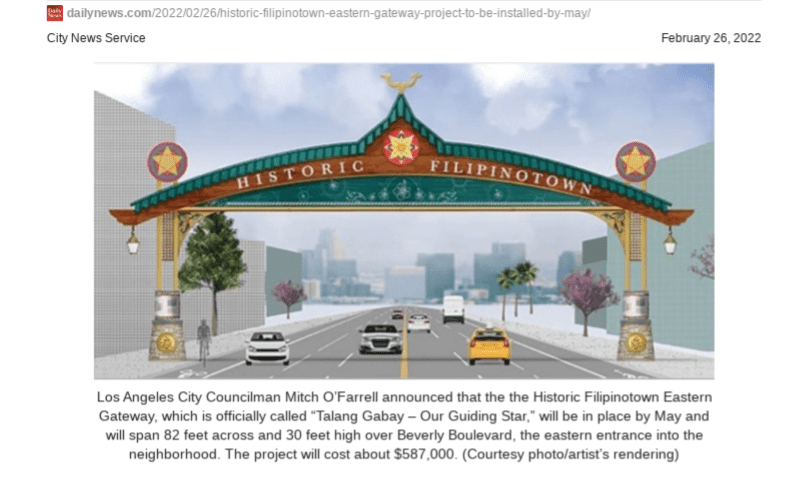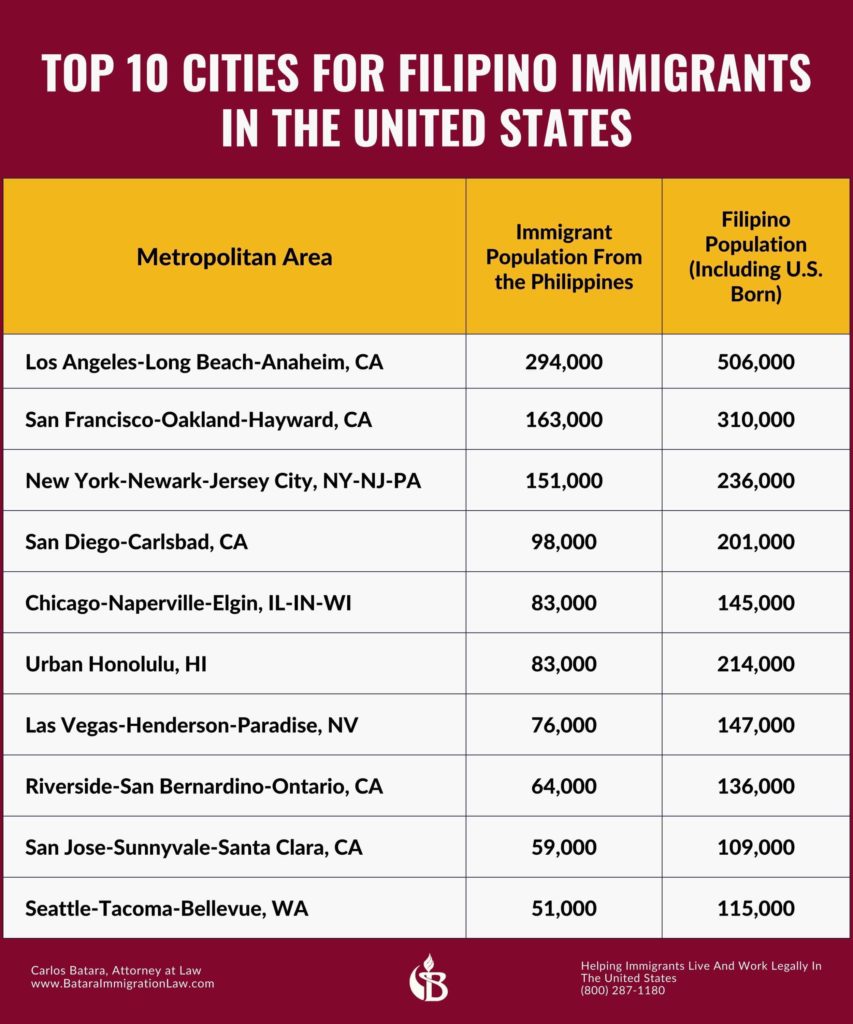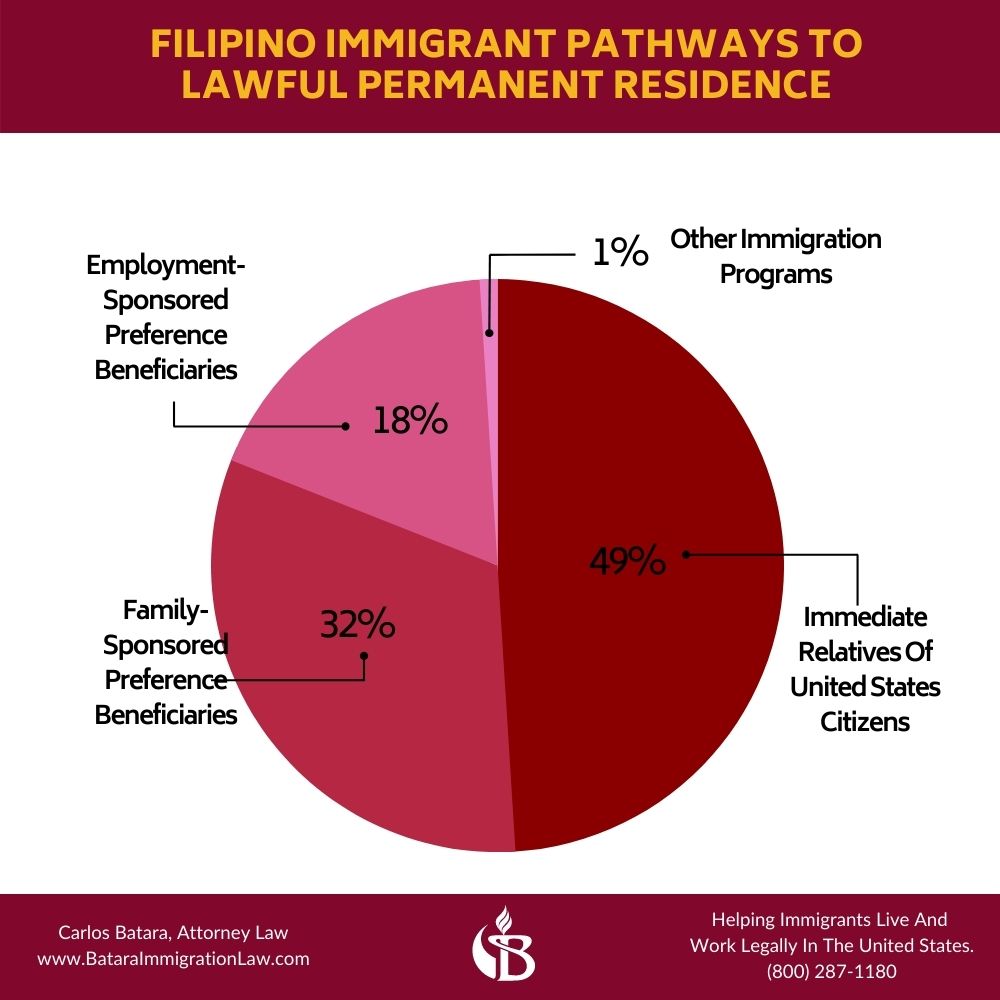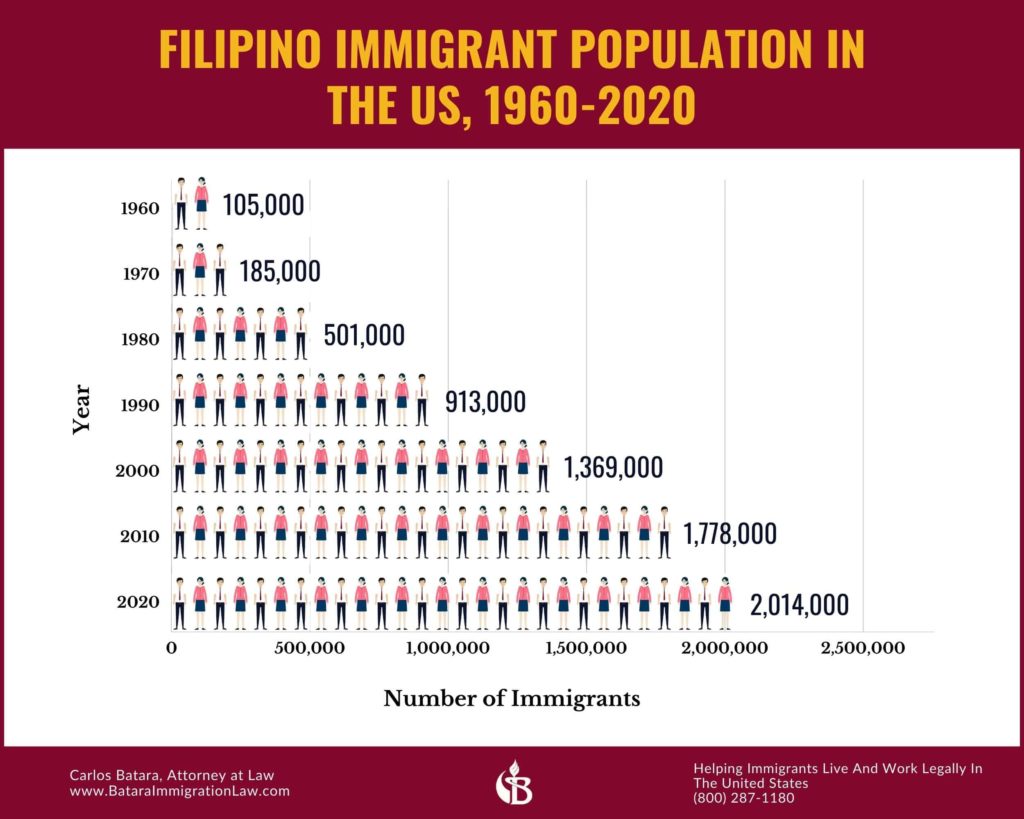
Public recognition of new immigrants to this country is never a quick process.
Recently, reported the Los Angeles Daily News, the City of Los Angeles unveiled a new landmark for local residents and visitors: The Filipinotown Eastern Gateway, a massive archway, 30 feet tall and 82 feet wide.
According to Los Angeles officials, it’s the largest such archway in the United States.
After 40 years of political battles, the landmark validates the contributions of Filipino immigrants in The United States. According to Eliseo Art Silva, one of the archway designers, the gateway “signals that Filipino Americans have finally arrived.”
It was long overdue.
As an Filipino immigration attorney, I agree. Their positive contributions to this country, day in and day out, have long deserved public recognition.
After all, immigrants from the Philippines are the fourth largest immigrant population in the United States.
And Los Angeles is home to the largest Filipino community nationwide.

Table Of Contents
- Filipino Immigrant Pathways To Permanent Residence
- Filipino Green Cards: How To Win Family Visas And Permanent Residence
- Fiance Visa Process For Filipino K-1 Applicants
- Marriage-Based Permanent Residence Consular Processing For Filipino Spouses
- U.S. Embassy Information For The Philippines
- The Long Journey To Green Card Success For Filipino Immigrants In The United States
Filipino Immigrant Pathways
To Permanent Residence
The United States is home to the largest number of Filipinos living abroad. According to United Nations studies, the next largest congregations are in Saudi Arabia, Canada, the United Arab Emirates, Australia, and Japan.
Of the Filipino immigrants living in the United States today, more than 80% obtained lawful permanent residence through family reunification processes. In other words, they have been sponsored by relatives who were either U.S. citizens or lawful permanent residents.
This figure is nearly 20% greater than the family-based percentage for all immigrants living in the United States.
Further, recent research by The Migration Policy Institute suggests 71% of all Filipinos in the U.S. are naturalized citizens. This, too, is a much higher total than the estimated 51% for all immigrants currently living in the U.S.
Their road to permanent residence success has not been without obstacles.
In addition to the legalized Filipino population, about 313,000 Filipino immigrants living in the U.S. are undocumented. Some estimates suggest approximately 26,000 are eligible for benefits under the Deferred Action For Childhood Arrivals program. Only a relatively small number of Filipino youth have applied for DACA.

Filipino Green Card Lawyer: How To Win Family Visas And Permanent Residence
Many of our Filipino immigration clients are U.S. citizens or permanent residents who want to marry someone who does not live in the United States.
Generally speaking, such couples have two legal options.
They can file a petition for a K-1 fiancé visa before marriage or an I-130 immigrant relative petition after marriage.
This choice, I’ve learned in my Filipino immigration attorney practice, often comes down to six key factors. These issues are outlined in: K-1 Visa vs. Marriage Green Card: How To Choose Your Best Option
Let’s take a closer look at the step-by-step process for both options.
Fiancé Visa Process For
Filipino K-1 Applicants
The K-1 process begins when the U.S. citizen files an I-129F fiancé visa petition, after which the couple marries. Once the Filipino fiancée is granted a K-1 nonimmigrant visa, she can enter the United States.
Within 90 days of her arrival, the couple is required to tie the knot. Once the couple marries, the Filipino immigrant spouse can file a green card application for permanent residency.

For more information on the specifics of filing a fiancé visa petition, see this page: Fiancé K-1 Visa Attorney Services.
Marriage-Based Permanent Residence Consular Processing For Filipino Spouses
On the other hand, some couples want to get married and start their joint life right now. They don’t want to delay things.
In this situation, the couple will be inclined to forgo the fiancé visa process. Instead, they will get married first, then file their immigration paperwork.
To begin the green card marriage process, the U.S. citizen needs to file an I-130 immigrant visa petition for his spouse.
This article shares the I-130 process in more depth: Immigrant Relative Petitions And Family-Based Visas.
Getting married sooner, however, is not the same as living together sooner. Because the Filipino immigrant is seeking permanent resident benefits via consular processing, she is also required to submit forms and documents to the Embassy or Consulate which serves her home country, and must the green card interview there.
Here’s a more detailed breakdown of the marriage green card process for Filipinos through consular processing:

More information on the green card marriage process abroad can be found at: Consular Processing For Permanent Residence Through Marriage.
U.S. Embassy Information
For The Philippines
As noted above, your K-1 and permanent residence visa applications will be processed at U.S. offices abroad. Here is the information where Filipino immigrant visa applications are processed:
1201 Roxas Boulevard
Manila, Philippines 1000
Phone: (63) 2 5301-2000
The Manila Embassy call center is open Monday through Friday, from 9:00 a.m. to 5:00 p.m. (Manila time) for inquiries and visa interview scheduling.
The Long Journey To Green Card Success For Filipino Immigrants In The United States
Over the past three decades, in my capacity as a Filipino Immigration Attorney, I have guided and watched the journey of immigrants to the United States from the Philippines.
Despite numerous obstacles, Filipinos have become one of our nation’s largest immigrant communities. This section shares their long quest to become permanent residents in the United States.
The first Filipinos migrants to the region now known as the United States arrived in the 1500s.
After colonization by Spain, the Philippines played a significant role in developing Spain’s economic empire from 1521 to 1898 through the Manila galleon (i.e., sailing ships) trade industry between Manila and Acapulco, Mexico.
In 1763, Filipino deserters and escaped slaves of the Spanish galleon trade established the first permanent settlement for Filipinos in America at Saint Malo, a small fishing village just 30 miles east of New Orleans, located in present day St. Bernard Parish, Louisiana.
The first known Filipino immigrant to become a naturalized citizen was Ramon Reyes, in 1898.
Shortly after the U.S. defeated Spain, Filipino migration to the United States began when the U.S. annexed the Philippines in 1899. This led to a three-year war with the Philippines, at which time the American government began to recruit Filipino sailors for the U.S. Navy.
After the war, the Philippines became a U.S. territory. Filipinos became U.S. nationals. This led to an influx of Filipinos to work as agricultural laborers, mainly on West Coast vegetable and fruit farms and Hawaii sugarcane plantations.
According to U.S. Census Bureau statistics for 1910, only 406 persons of Filipino descent were living in the United States. In 1920, the number had grown to 5,600. By 1930, the Filipino-American population exceeded 45,000.
In 1934, the Tydings-McDuffie Act was passed. Although it put the Philippines on track to gain independence, the Act imposed a limit of 50 Filipino immigrants per year.
Due to the needs of the United States military in World War II, immigration opportunities were reopened for Filipinos. As early as 1941, suspecting war with Japan was imminent, the U.S. began to recruit Filipinos to build a military defense force in the South Pacific. .
In exchange for their service, Filipino soldiers were promised American citizenship, full pay, and veterans benefits. Over 260,000 Filipinos signed up. More than half died in combat.
As explained in Filipino Family Reunification: A Battle To Restore A 75-Year Promise, after the war ended, President Truman signed two laws – together called the 1946 Rescission Act – which annulled the offers of citizenship and veteran benefits made to Filipino World War II veterans.
Later that year, on July 4, 1946, the Treaty of Manila was signed. Under the treaty, the United States relinquished its sovereignty over the Philippines, recognizing their rights as an independent nation.
By 1960, the Filipino immigrant population in the U.S. reached 105,000.
In 1965, the Immigration and Nationality Act was passed.
Before the Act, the immigration system was skewed in favor of Europeans. 70% of all immigrant visas were allotted to just three countries — the United Kingdom, Ireland, and Germany.
The 1965 Act opened the door to racial and ethnic minorities throughout the globe. Its impact on immigrants from the Philippines can be seen in the chart below.

Ready to take a serious and honest look at the strengths and weaknesses of your immigration case? Let’s get started with a personalized strategy and planning session . . .




